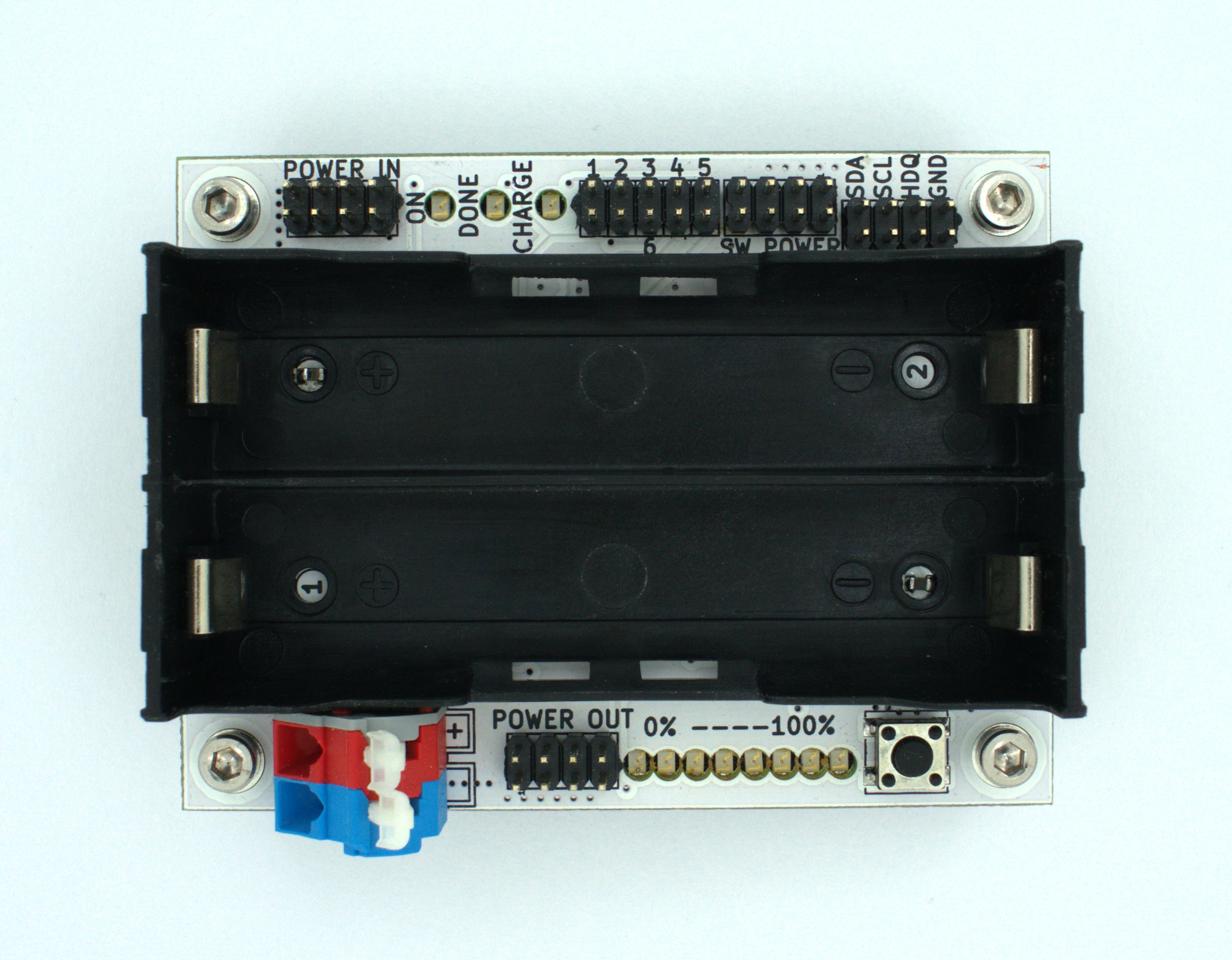LION2CELL01D - Li-ion dual-cell Battery Management Module

Description
The LION2CELL01D is an integrated battery management solution for 18650 Li-ion batteries. It is designed to manage the charging, balancing, and monitoring of two series-connected Li-ion cells. This module measures the remaining energy, voltage, and temperature of the batteries, and protects against over-voltage and over-draining conditions.
Features
- Charging and Balancing: Supports charging, balancing, and termination with temperature protection.
- Gas-gauging: Temperature-compensated gas-gauging for accurate remaining energy estimation.
- Protection: Over-voltage, over-current protection, but no under-voltage protection (the module operates until battery depletion).
- Communication: Supports I2C and HDQ communication interfaces.
Technical Specifications
- Power Supply: 12 V @ 2 A
- Charging Current: Factory set to approximately 1.3 A
- Battery Holder: 2x 18650
- Interfaces: I2C, HDQ
- Integrated Circuits:
- BQ24103 for charging
- BQ34Z100 for fuel gauging
- Dimensions: 80.77 x 60.45 x 16 mm
Connection
| Pin |
Signal |
Description |
| 1 |
PG |
Power Good |
| 2 |
STAT2 |
Status Indicator |
| 3 |
GND |
Ground |
| 4 |
CE |
Chip Enable |
| 5 |
STAT1 |
Status Indicator |
| 6 |
CMODE |
Configuration Mode |
Construction
The module is constructed with three main functional blocks:
1. Charging Circuitry: Manages the charging process of the two series-connected Li-ion cells.
2. Measurement Circuitry: Measures the voltage, current, and temperature of the cells.
3. Balancing and Protection Circuitry: Ensures cell voltage balancing and provides protection against over-voltage.
Important Considerations
- Regular charging is required (at least once every six months) to maintain the batteries within operational voltage ranges.
- Specific resistor values and settings are used for the voltage measurement, ensuring accurate readings without exceeding voltage limits.
- The module is equipped with a balancing circuit that discharges one of the cells to match the voltage of the other, with a discharge current around 10 mA.
Setup and Configuration
- Installation:
- Check the PCB for proper soldering.
- Insert the batteries in the designated order: position 1 first, followed by position 2.
-
Verify the operation of the charging function by connecting a 12V adapter.
-
Software:
- Use
setguage2cell.py to upload parameters to the energy measurement circuit.
- Parameters are tailored for Panasonic NCR18650B or INR18650MJ1 cells; adjustments are needed for other types.
- Conduct at least one charge/discharge cycle for accurate energy measurements.

